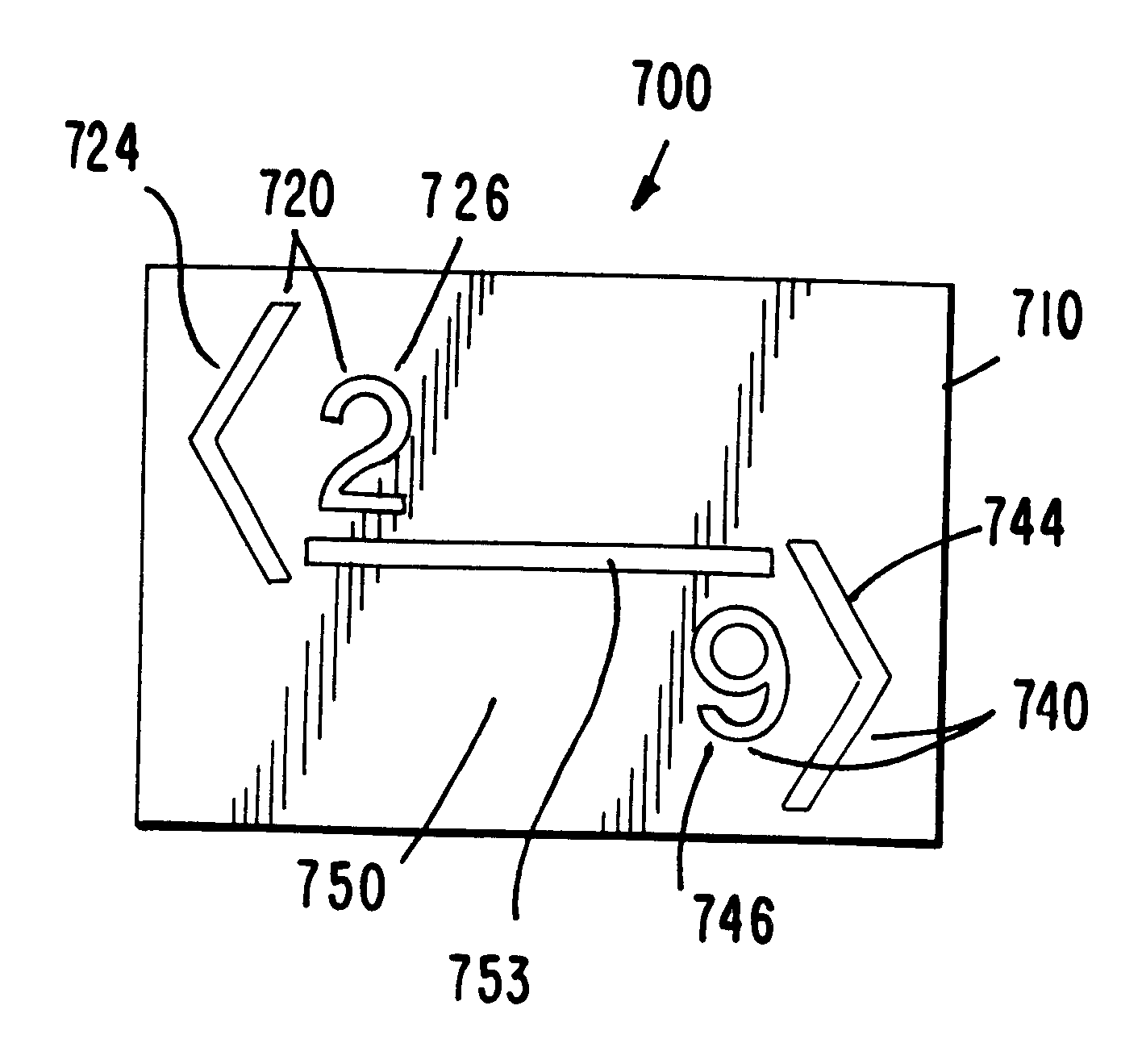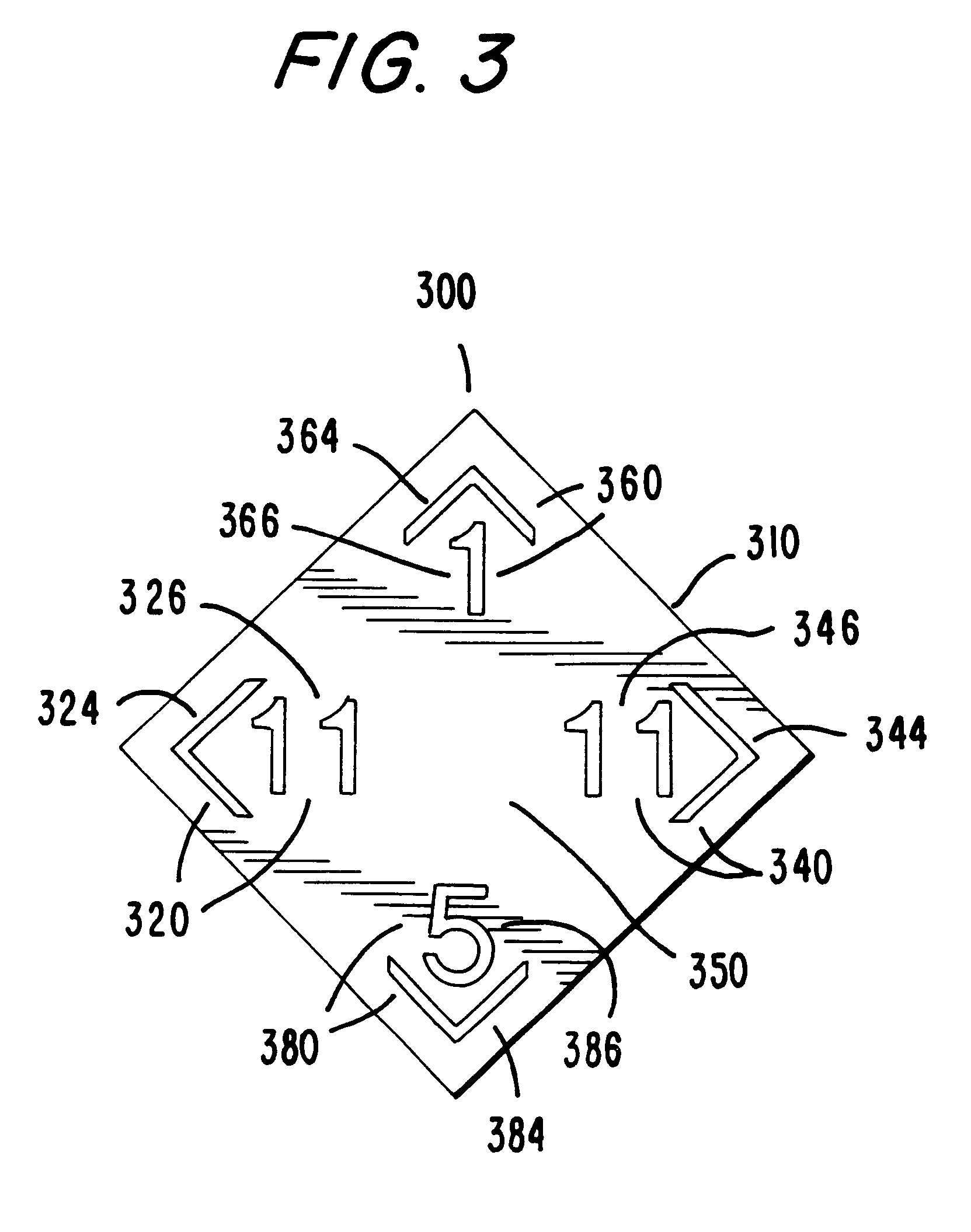Tactiovisual distance-to-exit exit-finding system
a technology of distance-to-exit exit and finding system, applied in the field of finding exits, can solve the problems of doubtful effectiveness of simplified floor plans, electrical power and vision-dependent lower-level aids
- Summary
- Abstract
- Description
- Claims
- Application Information
AI Technical Summary
Benefits of technology
Problems solved by technology
Method used
Image
Examples
Embodiment Construction
Turning now to the drawings, the embodiment of FIG. 1 is an aid for facilitating exit-finding in accordance with the present invention. It does so by indicating distance and direction to the nearest exits in structures having escape paths to exits to the left and to the right of the aid, and is generally designated 100 in the drawing
Aids 100 are intended for structures such as dormitories, hotels, motels, office buildings, ships, etc., and are, for the purpose, preferably affixed to or a part of the doors, or alternately the door openings, the door frames, or the parts of the walls or the bulkheads near those doors in those structures. Aids 100 are also applicable to structures such as aircraft passenger cabins, auditoriums, houses of worship, theaters, etc. having exits to the left and to the right of the aid.
Aids 100 are preferably touch-and-sight-recognizable rectangles with their long sides oriented horizontally as shown in the drawing, or alternately the flattened hexagons form...
PUM
 Login to View More
Login to View More Abstract
Description
Claims
Application Information
 Login to View More
Login to View More - R&D
- Intellectual Property
- Life Sciences
- Materials
- Tech Scout
- Unparalleled Data Quality
- Higher Quality Content
- 60% Fewer Hallucinations
Browse by: Latest US Patents, China's latest patents, Technical Efficacy Thesaurus, Application Domain, Technology Topic, Popular Technical Reports.
© 2025 PatSnap. All rights reserved.Legal|Privacy policy|Modern Slavery Act Transparency Statement|Sitemap|About US| Contact US: help@patsnap.com



